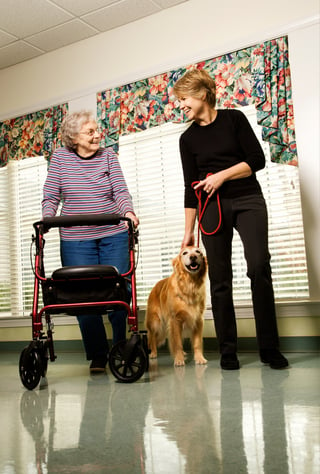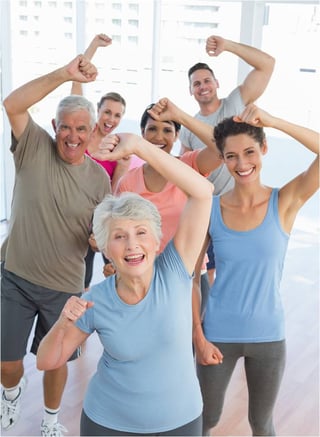 You know you want and need to have a regular plan for your exercise, but where do you begin to
You know you want and need to have a regular plan for your exercise, but where do you begin to
develop an exercise program? Here are my best tips for creating a workout regimen that will work for you whether you are in your corporate fitness center, or at home and on the go.
Setting Goals
Setting goals establishes a justifiable reason for consistent exercise. Having a goal in place can also improve commitment and has been shown to improve adherence to programs and routines. The SMART system was designed as an acronym to help with goal setting. SMART stands for Specific, Measurable, Attainable, Relevant, and Timely. Ideally, established goals should be characterized by these five words. Following the SMART guideline can improve the chances that you will achieve your goals.
The Mind-Muscle Connection
When it comes to resistance exercise, building muscle and strength is about much more than going through the motions. As you would imagine, concentration is an important part of achieving any goal, and focused concentration becomes even more important during resistance training. This focused concentration during weightlifting is the mind-muscle connection, and refers to contracting or tensing a muscle not only through physical movement, but also through thought. An example of someone incorporating the mind-muscle connection would be an individual performing a biceps curl and focusing their concentration on slowly flexing the elbow joint using the biceps muscle, as opposed to just going through the movement.
Variety
Whether speaking about aerobic capacity, muscular strength, or muscular endurance, fitness is all about adaptation. For example, the heart eventually adapts to aerobic exercise when it is performed consistently, and it begins to pump blood and oxygen more efficiently. Muscles adapt to strength/resistance training by recruiting more muscle fibers and possibly splitting the fibers to form new muscle cells. However, physiological adaptations do not always yield positive results, which is why variety plays an important role.
Adaptation to a particular exercise also translates to less calories burned performing that exercise, because just as the heart has become more efficient at pumping blood, the metabolism has become more efficient with burning calories. To avoid this, it is important to perform a variety of different exercises targeting different muscles and muscle groups. Doing so will not only prevent imbalances, but also ensure that all sections of a muscle get adequate stimulation.
Nutrition
There’s a well-known saying in the fitness industry along the lines of, “Abs are made in the kitchen”—referring to the well-tested theory that nutrition plays a larger role in muscle definition than exercise itself. But this phrase can be applied to more than just the aesthetic appeal of defined abdominals. Eating habits play an important role in achieving fitness results, whether these habits refer to the amount, quality, or time that food is consumed. Muscles require nourishment through food, along with adequate protein and carbohydrates to rebuild in the recovery after a workout.
Group Fitness or Personal Training
Getting up and getting moving is said to be the hardest part of staying active, but sometimes more guidance is required in order to stick with a healthy routine. Luckily, there are options for those who need a more structured and supportive environment to stay active. Your corporate fitness center may offer group fitness classes Monday through Friday at varying times, and these can be a great way to incorporate exercise and social time into your day. Personal training is a great option for those who prefer more detailed, hands-on instruction when performing exercise. Be cautious when hiring a trainer and that they are qualified professionals.
Looking to have a fitness professional onsite at your corporate office? NIFS Fitness Management hires degreed, qualified staff to provide NIFS services at our client sites. Click below for more on how we find great staff.


 lunch, walking down the hallway, or picking up groceries, multiple muscles are being used through the range of motion of multiple joints. That’s why the compound, multi-joint, closed-chain movements are so much more effective than isolation, single-joint, open-chain movements.
lunch, walking down the hallway, or picking up groceries, multiple muscles are being used through the range of motion of multiple joints. That’s why the compound, multi-joint, closed-chain movements are so much more effective than isolation, single-joint, open-chain movements. 
 Exercise, as we know, is an essential part of living a healthy life—not only for the elderly, but for everyone. One common question I get is, “What exercises should I do?” Now, this is a loaded question. That’s going to depend on things like goal, fitness level, capability, and injury. But for the most part, I recommend that everyone follow basic guidelines for success when it comes to their fitness. Over the course of this blog, I discuss two of my guidelines for fitness. Not everyone is the same; therefore, one size doesn't fit all. But we are all humans, so one size does fit most.
Exercise, as we know, is an essential part of living a healthy life—not only for the elderly, but for everyone. One common question I get is, “What exercises should I do?” Now, this is a loaded question. That’s going to depend on things like goal, fitness level, capability, and injury. But for the most part, I recommend that everyone follow basic guidelines for success when it comes to their fitness. Over the course of this blog, I discuss two of my guidelines for fitness. Not everyone is the same; therefore, one size doesn't fit all. But we are all humans, so one size does fit most. 